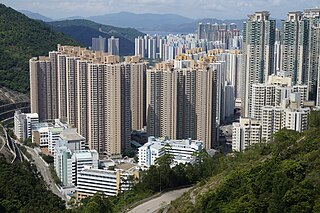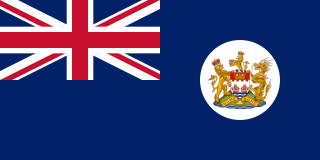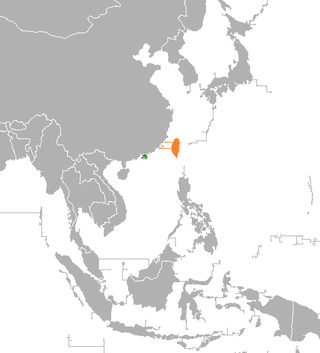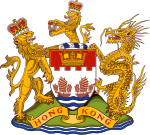
Hong Kong is a special administrative region of China. With 7.4 million residents of various nationalities in a 1,104-square-kilometre (426 sq mi) territory, Hong Kong is the fourth most densely populated region in the world.

The New Territories is one of the three areas of Hong Kong, alongside Hong Kong Island and the Kowloon Peninsula. It makes up 86.2% of Hong Kong's territory, and contains around half of the population of Hong Kong. Historically, it is the region described in the Convention for the Extension of Hong Kong Territory. According to that treaty, the territories comprise the mainland area north of Boundary Street on the Kowloon Peninsula and south of the Sham Chun River, as well as over 200 outlying islands, including Lantau Island, Lamma Island, Cheung Chau, and Peng Chau in the territory of Hong Kong.

Shek Kip Mei, originally known as Shek Kap Mei, is an area in New Kowloon, to the northeast of the Kowloon Peninsula of Hong Kong. It borders Sham Shui Po and Kowloon Tong.

Hong Kong (1800s–1930s) oversaw the founding of the new crown colony of Hong Kong under the British Empire. After the First Opium War, the territory was ceded by the Qing Empire to the United Kingdom of Great Britain and Ireland through Treaty of Nanjing (1842) and Convention of Peking (1860) in perpetuity. Together with additional land that was leased to the British under the Convention for the Extension of Hong Kong Territory (1898), Hong Kong became one of the first parts of East Asia to undergo industrialisation.

The region of Hong Kong has been inhabited since the Old Stone Age, later becoming part of the Chinese Empire with its loose incorporation into the Qin dynasty. Starting out as a farming fishing village and salt production site, it became an important free port and eventually a major international financial center.

Tiu Keng Leng, formerlyRennie's Mill, is an area of Hong Kong in the Sai Kung District adjacent to Tseung Kwan O.

The Music of Hong Kong is an eclectic mixture of traditional and popular genres. Cantopop is one of the more prominent genres of music produced in Hong Kong. The Hong Kong Philharmonic Orchestra and the Hong Kong Sinfonietta regularly perform western classical music in the city. There is also a long tradition of Cantonese opera within Hong Kong.

The 1967 Hong Kong riots were large-scale anti-government riots that occurred in Hong Kong during British colonial rule. Beginning as a minor labour dispute, the demonstrations eventually escalated into protests against the colonial government. The protests were partially inspired by successful anti-colonial demonstrations in Portuguese Macau which had occurred a few months prior.

The Japanese occupation of Hong Kong began when the governor of Hong Kong, Sir Mark Young, surrendered the British Crown colony of Hong Kong to the Empire of Japan on 25 December 1941. His surrender occurred after 18 days of fierce fighting against the Japanese forces that invaded the territory. The occupation lasted for three years and eight months until Japan surrendered at the end of the Second World War. The length of the period later became a metonym of the occupation.

Hong Kong in the 1970s underwent many changes that shaped its future, led for most of the decade by its longest-serving and reform-minded Governor, Murray MacLehose. Economically, it reinvented itself from a manufacturing base into a financial centre.

The handover of Hong Kong from the United Kingdom to the People's Republic of China was at midnight on 1 July 1997. This event ended 156 years of British rule in the former colony, which began in 1841.

1960s in Hong Kong continued with the development and expansion of manufacturing that began in the previous decade. The economic progress made in the period would categorise Hong Kong as one of Four Asian Tigers along with Singapore, South Korea, and Taiwan.

Tung Wah Hospital is a charitable hospital in Hong Kong under the Tung Wah Group of Hospitals. Located above Possession Point at 12 Po Yan Street in Sheung Wan, it is the first hospital established in Colonial Hong Kong for the general public in the 1870s.

Sir Kai Ho, better known as Sir Kai Ho Kai and born Ho Shan-kai (何神啟), was a Hong Kong barrister, physician and essayist in colonial Hong Kong. He played a key role in the relationship between the Hong Kong local community and the British colonial government. He is remembered as a supporter of the Reform Movement and as a teacher of Sun Yat-sen, who would become the founding father of the Republic of China. Hong Kong's former airport, Kai Tak Airport, was named after him as the land the airport sat on was reclaimed by Kai Tack Land Investment Company Limited, founded by him and Au Tak.

From 1841 to 1997, except for a brief period of Japanese occupation during World War II between 1941 and 1945, Hong Kong was a British crown colony and, from 1981 until its handover, a dependent territory of the United Kingdom. The colonial period began with the British occupation of Hong Kong Island under the Convention of Chuenpi in 1841 of the Victorian era and ended with the handover of Hong Kong in July 1997.

The Peak District Reservation Ordinance 1904, originally enacted as the Hill District Reservation Ordinance, is commonly called the Peak Reservation Ordinance and was a zoning law that reserved most of the Victoria Peak as a place of residence to non-Chinese people except with the consent of the Governor-in-Council. The law was in force from 1904 to 1930 where the deadly Third Pandemic of Bubonic plague took place in China, causing 100,000 deaths, and enormous number of Chinese influxed into Hong Kong, causing the 1894 Hong Kong plague. Contemporary historians’ views toward the Ordinance vary, with some attributing the Ordinance to health segregation, whereas others attribute it to social status segregation. The debate on the second reading of the Bill is recorded in the Hong Kong Hansard, which shows that the two Chinese members, Ho Kai and Wei Yuk, did not oppose the Bill but a minority of the "leading Chinese" in the community were against it.
Conservatism in Hong Kong has become the backbone of today's pro-Beijing camp, which has been the major supporting force of the SAR administration led by the indirectly elected Chief Executive. It is one of two major political ideologies of the Hong Kong, with the other being liberalism. Since the Sino-British Joint Declaration of 1984, conservatism has been characterised by business elites joining with pro-Communist traditional leftists in a "united front" to resist the rise of the demand for democratisation and liberalisation, in order to secure continued political stability and economic prosperity while maintaining a good relationship with the communist central government in Beijing leading up to and after the 1997 handover.

Relations between the government of Hong Kong SAR of the People's Republic of China (PRC) and the Taiwan Area of the Republic of China (ROC) encompass both when Hong Kong was under British rules or when the Republic of China controlled mainland China and afterwards the ROC fled to Taiwan. This is also a part of the Cross-strait relations.

The Boundaries of Hong Kong, officially the Boundary of the Administrative Division of the Hong Kong Special Administrative Region of the People's Republic of China, is a regulated administrative border with border control in force under the One country, two systems constitutional principle, which separates the Hong Kong Special Administrative Region from mainland China, by land border fence of 30 km (19 mi) and maritime boundary of 733 km (455 mi), enforcing a separate immigration and customs-controlled jurisdiction from mainland China.
Trea Wiltshire is a Western Australian based writer.



















